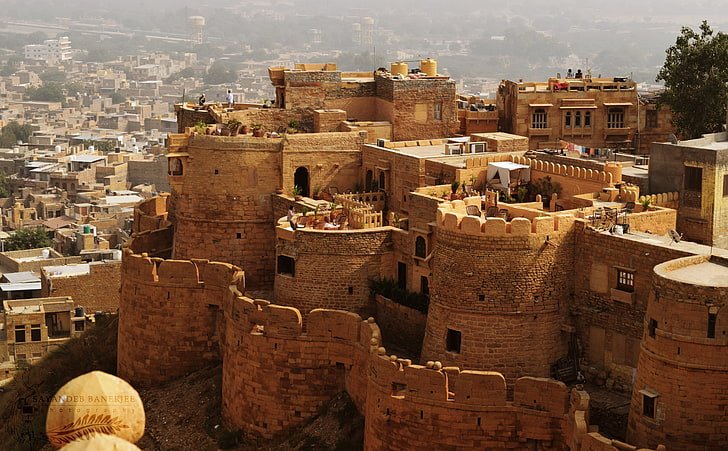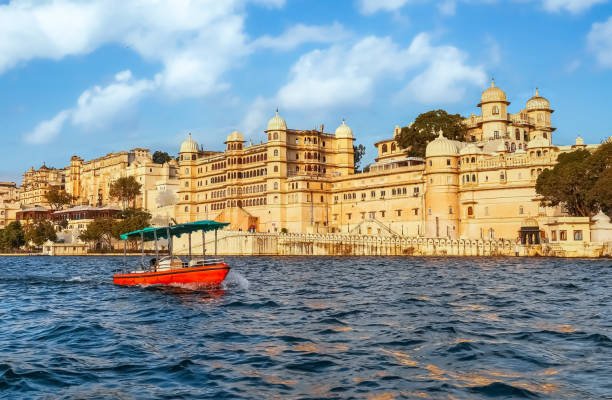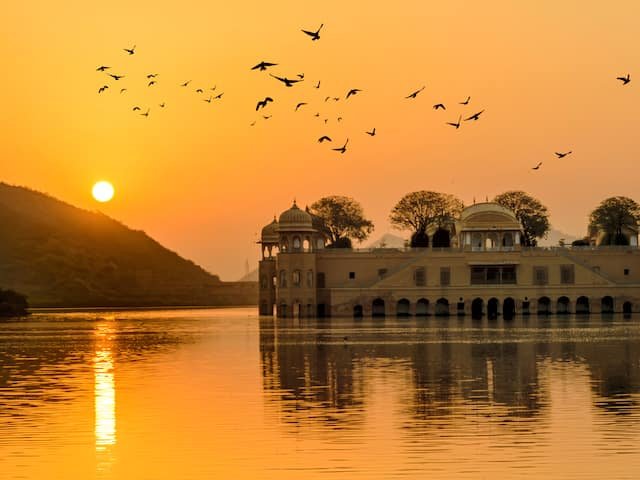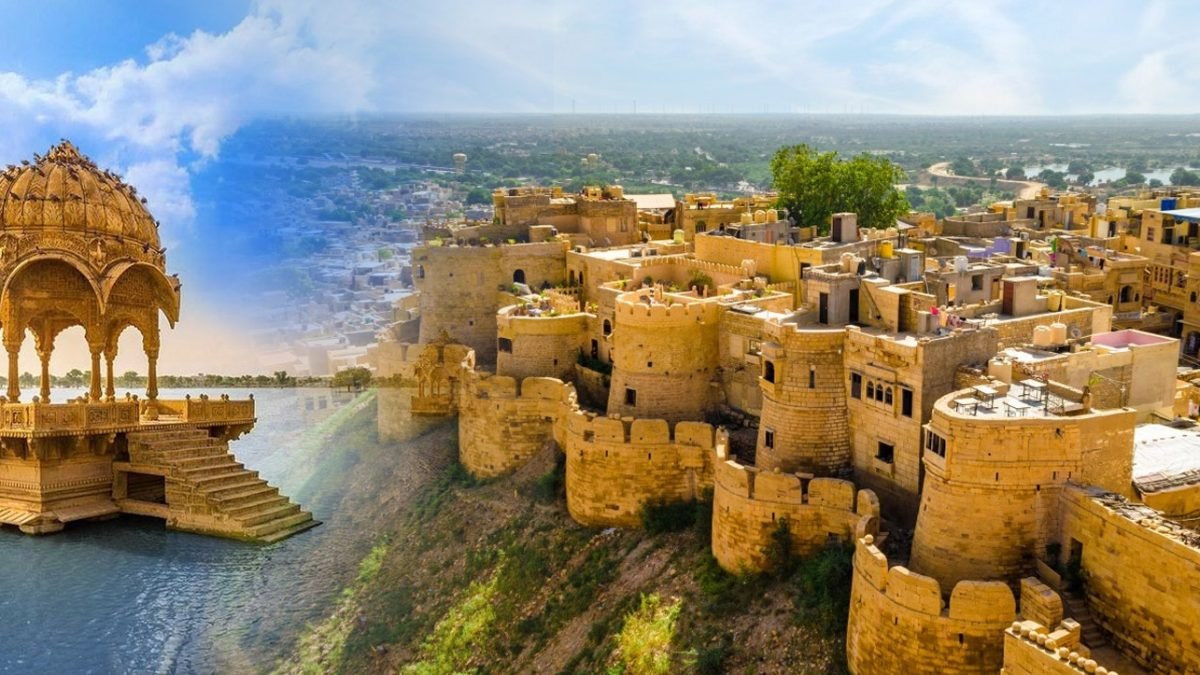Jaisalmer, known as the “Golden City,” is steeped in stories that shimmer as brightly as the yellow sandstone that shapes its architecture. Among its most iconic symbols is the majestic Jaisalmer Fort—locally known as Sonar Quila—which dominates the city’s skyline. Over the centuries, this living fort has been the subject of countless legends, many of which blur the line between myth and reality. Travelers visiting Rajasthan often seek reliable local experiences, starting with a trusted Taxi service in Jaisalmer to navigate the city’s golden past and vibrant present.
The Origins of Jaisalmer Fort: Myth or Reality?
Jaisalmer Fort was founded in 1156 AD by Rawal Jaisal, a Bhati Rajput ruler. According to legend, the fort’s location was prophesied by a wise sage named Eesaal. He foretold that a descendant of the Yadava clan (to which Rawal Jaisal belonged) would establish a powerful kingdom on Trikuta Hill. Inspired by this prophecy, Rawal Jaisal abandoned his old capital, Lodhruva, and laid the foundation of the golden citadel atop the hill.
While this story is often shared by local guides, historical records support the migration due to strategic reasons. Trikuta Hill offered both a defensive vantage point and proximity to the Silk Route, making Jaisalmer a trade hub for centuries.
The Legend of the Cursed Gate: The Tale of Salim Singh
One of the more chilling legends associated with Jaisalmer Fort is that of Salim Singh, the ambitious prime minister of Jaisalmer in the 18th century. He is infamous for constructing a palace with an arched roof that allegedly rivaled the Maharaja’s residence in grandeur. According to local folklore, the ruler, threatened by Salim Singh’s growing power, ordered the top stories of the palace to be demolished.
The fort’s Hawa Pol (Wind Gate) is believed to be cursed due to the tyranny of Salim Singh. Some locals claim that mishaps still occur to those who disrespect this part of the fort. However, historians note that while Salim Singh was indeed a powerful and controversial figure, the “curse” may be more a reflection of public resentment than a factual event.
Queen’s Sacrifice and the Ritual of Jauhar
Perhaps the most dramatic and tragic stories surrounding the Golden Fort involve the Rajput practice of Jauhar—mass self-immolation by women to avoid capture during sieges. Jaisalmer witnessed such events during invasions by the Delhi Sultanate and later the Mughals.
Legend holds that after the fort fell to an enemy siege, the Rajput women—led by their queens—performed Jauhar in underground chambers. Though heart-wrenching, this account aligns with written accounts by chroniclers of the time, confirming the ritual as both real and revered within Rajput honor codes.
Ghosts of the Fort: Folklore or Fear?
Many believe that Jaisalmer Fort is haunted, particularly in the narrow lanes around the older temples and havelis. Tourists and locals have shared stories of unexplained whispers, flickering lights, and a feeling of being watched.
One of the more famous haunted stories involves a Brahmin priest who cursed the royal family after being unjustly exiled. It’s said that his curse lingers in the fort’s atmosphere. Paranormal investigators have tried to debunk these stories but agree that the fort’s isolation, historic events, and crumbling architecture lend an eerie vibe that’s hard to ignore.
A Living Fort: Myths Meet Modernity
Unlike most forts in India, Jaisalmer Fort is still inhabited. Nearly 3,000 residents live inside its sandstone walls. These families, many of whom are descendants of original settlers, operate shops, temples, and guesthouses, creating a blend of medieval history and modern life.
Despite the romantic legends, the fort faces real-world challenges: erosion, overpopulation, and drainage issues. Conservation efforts, supported by both the government and UNESCO, aim to preserve this historical marvel for future generations.
Experiencing Jaisalmer’s Legendary Past Firsthand
To explore the Golden Fort and its many tales, travelers often start with a Jaisalmer one day city tour that includes not just the fort but also Jain temples, ancient havelis, and bustling bazaars. With knowledgeable guides and curated itineraries, visitors can sift through myths and facts as they walk the fort’s narrow alleys and touch its weathered stones.
Those seeking a more immersive adventure often opt for the One Day Sam Desert Tour, where stories of nomadic life, camel caravans, and desert mysticism come alive under the open sky. The tour offers a chance to contrast the fortified tales of the city with the soulful silence of the dunes.
Fact Versus Folklore: What Really Matters?
When it comes to Jaisalmer Fort, separating fact from folklore isn’t just a scholarly exercise—it’s part of the charm. Whether you’re listening to a guide recount a queen’s bravery or gazing at the sunset from a bastion, what lingers is not just historical accuracy but emotional truth. The fort’s beauty, grandeur, and resilience speak volumes, even when the facts are cloaked in myth.
Ultimately, the legends of the Golden Fort continue to captivate because they are deeply human—stories of love, betrayal, courage, and power. These tales may not always be historically provable, but they remain essential to the city’s identity and allure.




